|
|
Confirmed Speakers*
|
*This list of speakers subject to change
|
|
|
Bev Alfeld
|
Beverly Ellen Schoonmaker Alfeld, also known as "Jamlady", grew up in a commercial-nursery/greenhouse family in Accord,
New York. Her early interest in horticulture and cooking were a tremendous influence on her later innovations in canning.
Alfeld is dedicated to educating home cooks on how to can safely. Her creativity and extensive research has led her
to assemble innovative recipes. Jamlady’s methods dispel the mysterious aura around home canning and debunk
the myth that canning is only for those with extensive leisure time.
Alfeld began her post-secondary education by earning a B.A. in art from the State University of New York. She went on to teach
elementary school art and spent much of her free time studying plants. She returned to her formal education, earning a M.A.
in theoretical and applied design and a M.F.A. in art and textile chemistry from Northern Illinois University.
She also completed advanced coursework in the fields of education, administration, and school law.
After twenty years of teaching art, science, and consumer education to elementary, high-school, college,
and special-needs students, Alfeld retired from the classroom. She explored her entrepreneurial side as she ran a
thirteen-acre organic farm and opened a farmers’ market in Crystal Lake, Illinois. During this time, she completed
the school of instruction in food processing prescribed by the Food and Drug Administration.
Alfeld then founded her company, Cook, Seal, and Process: Purveyors of Fine Preserves and Condiments,
and began marketing Jamlady products.
Alfeld later authored "The Jamlady Cookbook", a resource cookbook for the
canner, gardener, gourmet chef, and health-conscious person. The book features more than four hundred
recipes for jellies, jams, preserves, butters, and other homemade products. Most recently, Alfred
wrote Pickles to Relish, an encyclopedic cookbook with an ethnobotanical approach to cooking, canning, and living.
Alfeld is a member of the Daughters of the American Revolution and is the founder of the Donald L. Schoonmaker
Scholarship Fund. She is a judge at the annual International Pickle Festival in Rosendale, New York, and is a
contributing editor and columnist for Fruit Gardener magazine. Her column, "Jamming with Jamlady", can be found in each issue.
Alfeld is also a reader for Corwin Press, an education publisher.
She also works as an advocate for special-needs children and divides her time between
Crystal Lake, Illinois; Accord, New York; and Chokoloskee Island, Florida.
Her two children, Tim and Kim Alfeld, are actively involved in her business operation.
Jam Lady's power point presentation for the Festival
|
|
|
Richard Ashton
|
Richard Ashton has been involved in agricultural pursuits all his life. From his younger years
in Texas on a grain and cattle ranch to his growing up days in the apple orchards of Oregon.
In Oregon the family grew apples, rye grass and peppermint. The peppermint was pressed and
the oil was used for many things from candy to cosmetics. In his college days he "worked his way"
by growing alfalfa and grapes in the central valley of California. But by far most of his life was spent in Texas.
Part of the time agriculture was a sideline but he was never got away from it entirely.
While working in the oil business in Texas he had grapefruit groves in the lower Rio Grande valley.
He says walking through the 8,000 trees in his orchards was favorite pastime.
He also had the pleasure to grow peanuts in central Texas.
|

|
They taste good and the hay is great cattle feed. There's nothing like sitting in a hay barn on a bale of
peanut hay picking out the few remaining peanuts and eating them.
Although his college degree is in business he has spent most of his time associated with horticulture.
He enjoys evaluating different fruit varieties.
He always seems to look at a fruit variety for its commercial possibilities since he spent many years with agriculture as his livelihood.
So when researching species and varieties of fruit intended for planting an orchard, on a farm he owned in central Texas, he had three main criteria.
He wanted a fruit that could stand some dry weather, one that would not be hurt by late spring freezes and one that would make money.
Pomegranates, apricots and jujubes were the final candidates. He knew that jujubes had only a "niche"
market and he could not find any apricots that could not be hurt by late spring freezes.
In all fairness he was able to find some apricot varieties that could withstand most late freezes.
But by far the fruit with the most potential was pomegranates.
A chance happening put him in contact with Barbara Baer. He had read an article she had written in Orion
magazine and got in contact with her. It seems that she had been in contact with a Dr. Levin in
Turkmenistan and found that he had collected over 1100 varieties of pomegranates from" the area of origin"
of the pomegranate. Richard was interested in these varieties because there were cold hardy varieties within
the collection. His central Texas area was just slightly on the cooler side for pomegranates.
Some winters get as low as 10 degrees F. in his area.
This started Richard on a path to where he, with others he recruited, evaluated most of the central
Asian pomegranates that were brought to this country. It has been a 8 year journey.
Today the cooperative he
founded - Texas Pomegranate Growers Cooperative, Inc. has over 40 grower members.
Orchards of pomegranates are going in all central, south and west Texas. The goal of the cooperative is
5,000 acres of pomegranates with a state of the art processing plant.
The Texas Department of Agriculture, the extension service of Texas A&M University and the
USDA have all helped get this growing industry moving. The bottom line is that all this would
not have been possible without pomegranate varieties from Dr. Levin's Turkmenistan collection.
All the main varieties recommended by the cooperative are from this south central
Asian collection; varieties such as Texas Red, Pecos, Sumbar and SAL.
|
|
|
Harvey Correia
|
Harvey Correia is a third-generation farmer from the Sacramento-San Joaquin Delta with a diversified farm.
Harvey was born and raised in the Isleton, California area and received a degree in Farm Management from
California Polytechnic State University in San Luis Obispo where he met his future wife.
Harvey's father encouraged him to find easier and more profitable work than working on the family farm and
Harvey found a career in agricultural lending for nearly 30 years. During the later years of his career
he and his wife lived on and operated a part-time farm which they had purchased in 1994. In 2007
Harvey retired from his lending/auditing career and began farming part-time, including the pursuit
of new small niche crops and hobby exotics.
Harvey's first interest in exotics came about after visiting the birth place of his father's parents
on Madeira, Portugal in late 2004. Enjoying the tropical climate and seeing bananas grown near his
grandparent's town developed an interest in growing bananas. In searching the Internet he learned of people,
many in CRFG, who had a passionate hobby of challenging their climate zones and growing things such as bananas.
His first bananas were purchased in 2006. In the fall of 2006 Harvey learned of different varieties of
pomegranates being grown and a friend told Harvey about an article on pomegranates in the Fruit Gardener in
September 2006. Harvey finally decided it was time to join the CRFG at that time which helped fuel
his pursuit into some small plantings of other rare fruits.
|
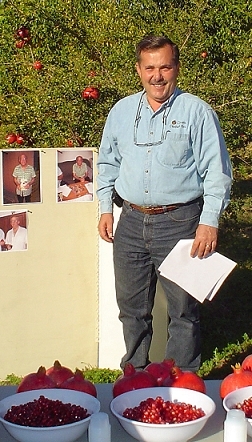
|
While Harvey was somewhat familiar with the expansion of pomegranates in California for many years,
his first really positive experience with a pomegranate was when he enjoyed some fresh-squeezed pomegranate
juice while he and his family were in Jerusalem when on a pilgrimage for Christmas 2005.
Reading articles by Barbara Baer and David Karp led Harvey to read further and he was fascinated in
reading the story of Dr. Gregoy Levin's lifetime work in pomegranates as told in Pomegranate Roads.
Harvey was already involved in marketing his niche crop of chestnuts via mail order Internet sales and
one of his customers became very thrilled when he heard pomegranates were being considered for an addition
to the farm. The customer was overly enthusiastic, wanting to place an order for 600 fruits for the following year.
Although this customer was disappointed to learn he'd have to wait a few years, he's continued to be a source of
great encouragement.
In researching pomegranates a few years ago Harvey was gathering information from many people around California,
other parts of the United States, Israel, and elsewhere. Being already active in some online discussion groups,
Harvey decided to start a new group dedicated solely to pomegranates. In October 2007 the Yahoo group PomWorldwide
was formed. It's a relatively small group with 146 members as of the end of 2010. The group has members from the
USA, Israel, Mexico, the Philippines, various areas of Europe, Iran, India, and Africa.
It's been a rewarding experience to help spread enthusiasm for the pomegranate fruit.
|
|
Mark Edwards
|
Mark Edwards writes, speaks and consults globally on sustainable food and energy.
Mark graduated from the U.S. Naval Academy in mechanical engineering, oceanography and meteorology.
He holds an MBA and PhD in marketing and consumer behavior and has taught strategic marketing,
leadership, sustainability and entrepreneurship at Arizona State University for over 30 years.
His recent book, Green Algae Strategy, won the 2009 best science book and is the best-selling
book in the world on algae.
Algae: Sustainable Food and Fuel
The algae industry has benefited from investments of over $1.5 billion in the race to create new
industries in clean and sustainable food, fuels, feed, fertilizers, fibers, neutraceuticals,
pharmaceuticals and advanced medicines.
|

|
Algae offer practical solutions for clean water,
CO2 sequestration and clean air. Come and participate in a fascinating discussion about our clean, green future.
|
|
|
Al Falkenstein
|
Alois Falkenstein has been living in Mesa AZ and practicing Ophthalmology
for 32 years. He has been interested in growing fruit trees for many years,
especially topical varieties.
Al has spent considerable time and effort in the past 12 years growing
Dragon Fruit. He had help from his friend, the late Paul Thompson, who
provided him with advise and also cuttings of various varieties.
Al's yard contains an impressive assortment of fruiting plants, including a
large mango tree. A trellis of Dragon Fruit, a.k.a Pitahayas, wraps around his back yard,
and he also has a sizeable green house.
|
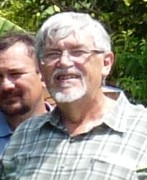
|
|
|
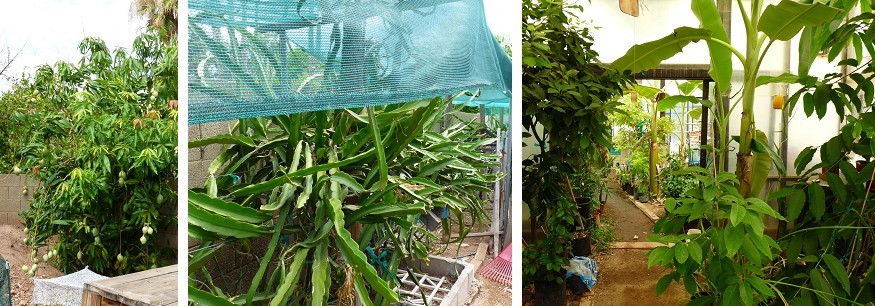
|
|
|
Scott Frische
|
Scott Frische is the Curator of Horticulture at the Phoenix Zoo. His extensive
background in the landscape and horticultural fields includes nursery management,
plant collection, identification and propagation, cactus hybridization and Permaculture design.
Scott's specific interest in date palms began as a young boy when his Father planted a
date palm that he had purchased from a date and Citrus farmer in Mesa, Arizona.
Since that time Scott has learned how to identify several cultivars of date palm
through examination of their various vegetative characters and growth tendencies.
With the help of others he has assisted in increasing both the number and cultivar
diversity of date palms in collections operated by ASU, U of A, the Phoenix Zoo and the USDA.
|

|
Over the last several years he has given short presentations on date palm culture for the
home gardener at the Citrus Clinics offered through Maricopa County Co-operative Extension Service.
Currently, Scott is designing his own multi-variety, small scale date garden in Waddell, AZ.
|
|
Jesus Garcia
|
Jesús Manuel García was born and raised in Magdalena de Kino, Sonora, México. In 1987, he received
a degree from La Escuela Normal del Estado in Hermosillo, Sonora, as an Elementary school Teacher.
In 1996 he returned to school and attended Pima Community College and the University of Arizona.
By December of 2001 he completed a Bachelor degree in Ecology and Evolutionary Biology, with a
minor in cultural Anthropology. In the meantime he also became a US citizen, achieving dual
citizenship of the United States and México.
Jesús has been associated with the Arizona-Sonora Desert Museum since 1991.
Currently, he is an Education Specialist, teaching natural history programs to the
Hispanic community in the Tucson area and schoolteachers in the border region of the state
of Sonora, Mexico. Jesús has many interests such as conservation biology, cultural ecology,
primitive technology, languages, music, gardening, and art.
|
Tasting History: The Kino Heritage Fruit Trees Project
In 2002, Tumacácori National Historical Park-an important mission site in southeastern Arizona-completed the
acquisition of an original 5-acre mission orchard and a significant portion of its original agricultural area.
It was on these lands in the late 17th and early 18th centuries that Jesuit missionaries such as Father Eusebio
Francisco Kino and later Franciscans introduced European fruit trees such as pomegranates, figs, quinces and
other fruits to this portion of the New World catalyzing a watershed agricultural transformation for the region's peoples.
|

|
|
The goal of the Kino Fruit Trees Project is to locate, propagate and replant historically and horticulturally
appropriate varieties of those fruit trees in this region. This has involved the project's team in an exciting
blend of archival, ethnohistorical, ethnobotanical and horticultural methods, experiments, and adventures.
This is an introduction of the broad outlines of the project, discussing the results of the first five years of
work, and talking about new directions.
|
|
|
Doreen Pollack
|
Doreen Pollack , Programs Director for Valley Permaculture Alliance, former board chair of the VPA
and owner of Down 2 Earth Gardens, a garden consulting company in Phoenix, Arizona. Doreen provides
advice to homeowners on how to reduce the use and dependency on outside resources in their landscape,
focusing on how to use a yard for food production.
Doreen is very active in the community gardens movement as well as teaching sustainable gardening
practices through the Valley Permaculture Alliance, Desert Botanical Garden, UofA Cooperative Extension
Office Master Gardener program and her own company.
|

|
|
Doreen is a Master Gardener, a Permaculturist,
graduate of the Permaculture Design Course Certificate Program and a community leader. She is a contributor
to several on-line websites, paper-based magazines and a past guest on Phoenix Channel 12 News.
Prior to working for the VPA and owning her own garden consulting business, Doreen ran programs for several
Phoenix-based non-profits (Hands on Greater Phoenix, Phoenix Youth at Risk and Valley Leadership) and
was a Vice President in the financial serves industry.
|
|
|
Doug Jones
|
|
Doug lives in Mesa Arizona and is one of the founding members of the Arizona branch of the CRFG.
Doug lived in Thailand for a couple of years, and upon returning to Arizona he realized
that in order to enjoy many of the tropical fruits he came to love he would have to grow them himself.
He now has hundreds of trees on a 1.3 acre irrigated lot
and an amazing 85 x 50 x 15 foot greenhouse. He grows guavas, annonas, bananas, mangoes, papayas,
pineapples, pomegranates, citrus, pecans, mulberries, loquats, and many other exotic fruit tree varieties.
|

|
|
|
Axel Kratel
|
|
Axel Kratel is an avid plant enthusiast who loves to grow exotic fruits and palms. But the plants don't always have to be exotic.
After discovering that his Santa Cruz Mountains garden produces truly delicious apples, Axel decided to delve deeper
and started to explore the world of apples and its wide assortment of flavors, colors and textures. He currently nurtures
a collection of over 450 apple varieties from all over the world. He also has devoted significant time in exploring
the Lost crops of the Incas, successfully growing numerous obscure Andean crops in the cool Santa Cruz Summers,
including ice cream beans, cherimoyas, capulin cherries, tamarillos and passion fruits. His latest quest is to
succeed with lucumas.
|

|
Axel applies principles of modern permaculture to manage his orchard and
produce organic fruits and vegetables, finding inspiration in Rudolf Steiner's biodynamics methodology
and Bill Mollison's permaculture design patterns.
In his spare time, Axel runs the Cloudforest gardener at
www.cloudforest.com
where he writes about growing exotic fruits and palms and answers numerous questions in the Cloudforest Cafe.
Axel has a PhD. in Physics from the California Institute of Technology, but he is convinced you don't need a PhD. to grow fruits.
|
|
Leo Martin
|
Leo Martin is a baby boomer. Via the California public school system he
became a medical doctor in order to earn steady plant money. He practices
anesthesiology in Phoenix, Arizona, and is a member of the Arizona chapter
of CRFG.
Serious gardening studies began at age 4 with his mother, who yielded to
incessant pleading and bought his first cactus at Fedmart. Further studies
with his paternal grandmother (house plants, bulbs, vegetables, growing
from seed) and maternal grandmother (African violets) rounded out his
primary horticulture education.
|

|
Leo has always gardened, even in the dorms, where he sprouted his first
mango seed, uncleaned. He then began the strange practice of buying exotic
produce to sprout rather than eat. He has been known to purchase one
product rather than another based on the container's suitability as a
sprouting greenhouse.
His first plant love is cactus & succulents. His house is easily
recognized from a block away. He has served the Central Arizona Cactus and
Succulent Society as President, and for eleven years was a member of the
Board of the Cactus and Succulent Society of America, where he supervised
that society's publications and Convention. Aside from cactus, Leo has a
home orchard with many kinds of citrus, apples, stone fruits,
pomegranates, dates, guavas, bananas, and a mango.
In his spare time he serves on the board of Arizona Schnauzer Rescue,
Inc., and houses rescue Schnauzers. If you need a wonderful dog contact
Leo.
|
|
Roger Meyer
|
Roger and Shirley began their rare fruit adventure by buying a 10 acre farm in the early 1970's and clearing the land in Valley Center, California.
Their goal was kiwifruit and avocados. They built a pack house for the kiwifruit and began packing for themselves and other growers.
By the 1990's they were forced to rethink the project because of low kiwifruit prices and escalating water bills.
They found jujube as a viable crop and began selling the fruit. Because jujube plants were so hard to come by, Roger learned to graft his
own trees and began importing new cultivars as there were basically only two available--Li and Lang.
|
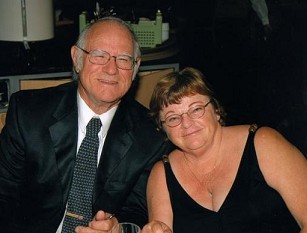
|
Roger bought the five acres next door to expand and retired from his 30 years as a pharmaceutical chemist for Allergan Pharmaceuticals in the mid 1990's.
Roger has traveled in many parts of the world to collect unusual fruiting plants and introduce them to CRFG members.
|
|
Robert Morris
|
Mr. Morris is a Horticulture Specialist and Associate Professor with the University of Nevada Cooperative
Extension housed in Las Vegas, Nevada, on the eastern edge of the Mojave Desert. His primary area of
focus for the past 30 years has been on horticultural plant water use, irrigation and the use of poor quality
water for irrigation.
Beginning in 2003 he developed the Backyard and Small-Scale Orchard program where temperate
fruit varietal performance is evaluated and management techniques for growing fruit in the desert have been
developed at the University Orchard in North Las Vegas.
In 2005 he developed the Producer to Chef program which
focuses on the marketing of high quality local produce to restaurants and the development of new local markets for
producers.
Mr. Morris has consulted with small-scale producers in Armenia, Kenya, Ethiopia, Mexico, Montenegro,
Lebanon, Vietnam, Philippines and Tajikistan on production techniques, irrigation, the development of cooperatives
and water user associations.
|
|
Jim Oravetz
|
Born and raised in Southern California, Jim and his wife relocated to Arizona in 1986.
He Honorably served in the United States Air Force, and is
a University of Arizona Master Gardener, Graduate of the 'Certified Desert Landscaper' school at
Phoenix Desert Botanical Garden, and
an Advanced Arizona Certified Nursery Professional and is a Desert Gardening and Landscape educator.
Jim successfully completed the U of A Master Watershed Steward training program and is a
Certified Arizona Master Watershed Steward.
Over the past years, plant interests have included Orchids, Bonsai, Carnivorous Plants,
Vegetable Gardening, Roses, Cactus and Succulents, Container Gardening, Tropical Fruit and Xeriscape Plants.
|
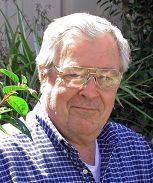
|
Jim is a former President of the San Gabriel Valley Cactus and Succulent Society (Southern California).
a former President of the Central Arizona Cactus and Succulent Society. (Phoenix Desert Botanical Garden)
and the current President of the Arizona Chapter of the CRFG.
Formerly the Senior Horticulturist for SummerWinds Nurseries Arizona Division,
Jim has also hosted the gardening segments for Jan D'Atri's Heart and Home on KAZTV13 and Sonoran Living on ABC15.
Jim has also taught Desert Gardening and Landscape classes for a local Community College,
Gardening groups and many Homeowner Associations in the greater metro Phoenix area.
Now retired, Jim does private Horticultural Consulting.
|
|
Monty Palmer
|
|
I come from a farming family and I've always enjoyed growing things to eat. While living in southern
Australia I learned about passionfruit and since 1994 I've been connected with the CRFG.
Both my grandfathers were farmers here in the low deserts of Arizona and I grew up in Mesa
and have experience growing and trimming nearly everything that grows here.
I've focused on growing avocados here in the desert and although it's a challenge it is possible and worth it.
|
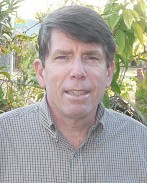
|
|
|
Edgar Valdivia
|
After retiring from the computer industry, Edgar joined CRFG in 1996.
He has since dedicated himself to growing many different rare fruits
including passion fruit, cherimoyas, pitahaya, pomegranates, lucuma,
apple quince and many more.
Living in Simi Valley, the weather is very challenging. In summer it goes up to 105+
and in winter can go down as low as 28. Edgar has done a lot of research in different
types of fruits and has hybridized many new varieties. He works very hard to promote
CRFG, is very active in the Los Angeles Chapter and is a member of the CRFG Development Fund.
Edgar does everything out of love and is always sharing his knowledge with all fruit lovers
not only by opening his garden, but also publishing articles on his work in the Fruit Gardener magazine.
|

|
|
|
Jon Verdick
|
I grew up with all sorts of edibles: fruits, nuts, and vegetables, really from birth.
I don't ever remember not being in the garden. The love of fresh, tree-ripe fruit has been a life-long pursuit.
I joined California Rare Fruit Growers about 25 years ago with 2 goals:Cherimoyas and Passion Fruit.
That led to Sugar Cane, Bananas, Sapotes, Che, Pitangas, and a whole world of other fruits; oh, and Figs.
When I was a child, figs were for Newtons only, but now owning a tree became an obligation (everyone else had them).
So, I acquired a couple, and wanted just a couple more good ones. Long story, short, the hunt for a couple great
varieties turned into a collection of about 800 varieties. All of the information I collected in an attempt to
understand my figs eventually led to a website (why not share: figs4fun),
taking tens of thousands of pictures, visiting the USDA collection at UC Davis, trading cuttings across the
country, and making a lot of great fig friends. I still grow all the other stuff, including 100 varieties of bananas,
but figs have truly been the most fun of all.
|

|
|
|
Glenn Wright
|
Associate Research Scientist and Extension Specialist for Fruit Crops, University of Arizona
Dr. Wright was raised near Denver, CO. He has a Bachelor of Science in Horticulture from
Colorado State University, with a minor in Spanish. He also has a Master of Science and a Ph.D.,
both in Horticulture from Texas A&M University.
Dr. Wright joined the University of Arizona in August 1992, as Tree Fruit Physiologist and Extension Specialist.
He is located at the Yuma Valley Agriculture Center. His work includes rootstock and scion evaluation,
plant growth regulator research, plant nutrition, pollination and orchard floor management work on citrus,
dates, and olives. He has also worked with blackberries and peaches, and will soon start a project on pomegranates.
Dr. Wright also teaches a course titled Citrus Production for the University of Arizona program located at
Arizona Western College in Yuma, and teaches citrus and date culture to master gardeners across the state.
|
|
|
Rick Yessayian
|
A retired Educator, with 35 years of experience, Rick has Degrees in Psychology, Education, Administration,
The Teaching of Science, Thermography and a host of experience in Astronomy. He was one of the applicants
to the ill-fated 1985-86 NASA Teachers in Space Program. Rick worked for JPL (the Jet Propulsion Laboratory)
in Pasadena with a number of programs as an Education Consultant for over 15 years.
He is a noted speaker and educator and has traveled to many countries sharing his love
for science and rare and unusual fruit. As a proponent of "edible landscaping", he now tries to keep ahead of
the weeds and gophers in his "high altitude", cold weather place in Running Springs, Ca.
There he raises 5 varieties of currents, gooseberries, raspberries, blackberries, quince,
apricots, apples, cherries, some huge Bartlett pears, papaws, and huge numbers of active gophers.
|
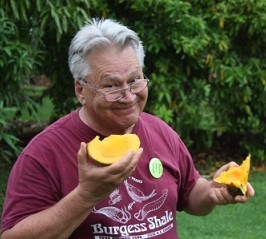
|
|
|
|
|
|